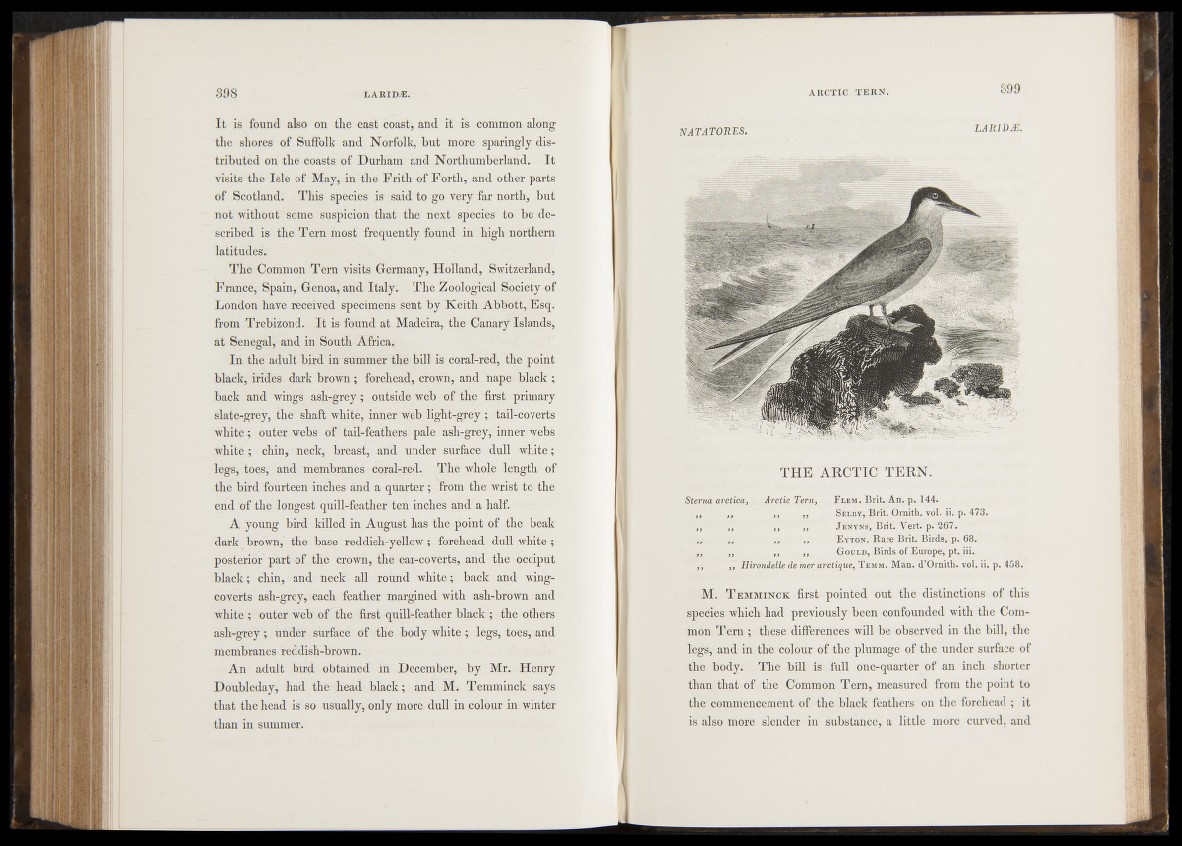
I t is found also on the east coast, and it is common along
the shores of Suffolk and Norfolk, but more sparingly-dis-T
tributed on the Goasts of Durham and Northumberland. I t
visits the Isle of May, in the Frith of Forth, and other parts
of Scotland. This species is said to go Very far north, but
Uot without^SOme suspicion that the next species to-, be dg^
scribed is the Tern most frequently found in high northern
latitudes.!
The Common Tern; visits Germany, Holland, Switzerland;
France, Spain, Genoa, and Italy. The Zoological Society of
London have received specimens sent by Keith Abbott, Esq.
from Trebizond. I t is found at Madeira* the Canary-Islands;
at Senegal, and in South Africa.
In the adult bird in summer the bill is coral-red, the point
black, indes dark brown; forehead, crown, and nape black ;
back and wings ash-grey outside web;of the first primary
slate-grey, the shaft white, inner'web light-grey ; taiFfcoverts
white; outer webs of tail-feathers pale, ash-grey, inner webs
white ; chin,neck; breast, and under;-surface' dull white;
legs, toes, and membranes coral-red. The whole length ill
the bird fourteen inches and a quarter; from the wrist to the
end Bp the; longest quill-feather; ten inches .and a half. ;
A young bird killed in August has the point o f; the beak
dark brown, the base reddish-yellow; forehead dull white;
posterior part of the crown, the ear-coVerts, and the occiput
black; chin, and neck all round white; back and wing-
coverts ash-grey, each feather margined with ash-brown and
white ; outer web of the first quill-feather black ; the others
ash-grey ; under surface of the body white-;, legs,^toes, and
membranes reddish-brown.
An adult bird obtained in December, by Mr. Henry
Doubleday, had the head black; and M. Temminck says
that the head is-so usually, only more dull in colour in winter
than in summer.
NATATORES. LAR1DÆ.
T H E ARCTIC T E R N .
Sterna arctica,,* Arctic Tepn, FLEM.,Brit. An. p. 144.
* ,, - Selby, Brit. Ômith. vol. ii. p. 473.
- s„ ' 1 ,, ,, J enyns, Brit. Vert. p. 267.
. . , *y, t < Es-ïoitj Bare Brig Birâa, p. 68.
-t ,, _■ -Gould, Birds of Europe, pt. iii,„
’ ,, Hirondelle de mer arctique, Temm. Man. d’Ornith. vol. ii. p. 458.
; . M. T emmincK-> first pointed out the distinctions of this
species which, had previously been confounded with the Common
Tern ;* these differences will be observed in the bill, the
legs, and in the colour of the plumage of the under surface of
the body!' The bill is full one-quarter of an inch shorter
than that of . the Common Tern, measured from the point to
the; commencement of the black feathers on the forehead ; it
is also more slender in substance, a little more curved, and